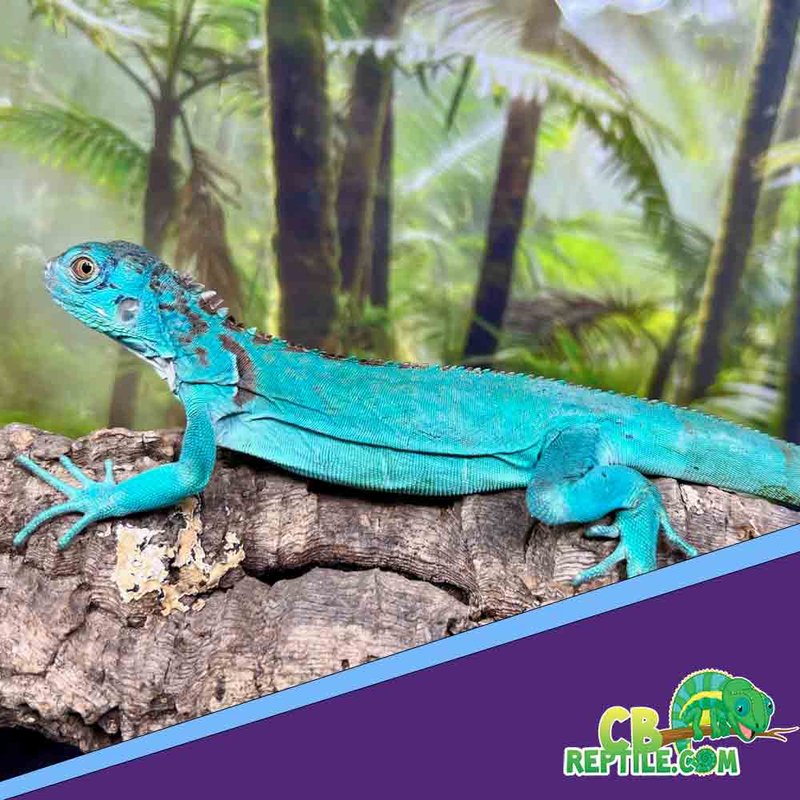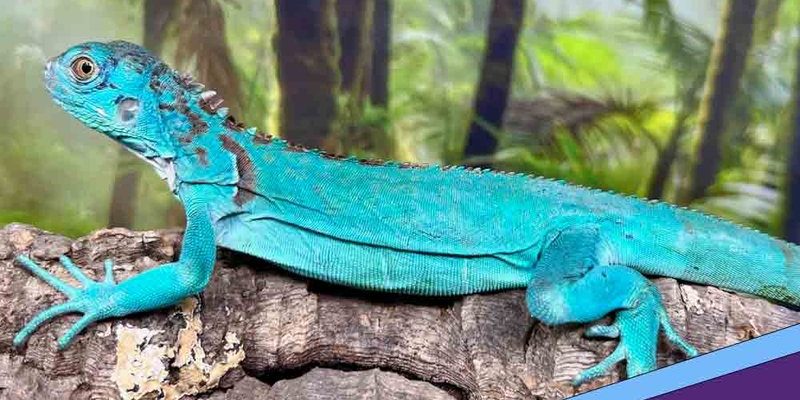
Think of your blue iguana’s habitat as a world of its own. It’s not just about having a tank; it’s about creating something that mimics its natural environment in the wild. In this guide, we’ll explore the best ways to set up a habitat that keeps your blue iguana happy and healthy. You might be wondering where to start, so let’s dive in.
Choosing the Right Enclosure Size
When it comes to blue iguanas, size really does matter! These reptiles can grow quite large, often reaching lengths of up to 5 feet or more. Ideally, you’ll want an enclosure that gives them enough space to move around comfortably. A good rule of thumb is to aim for a cage that’s at least 6 feet long, 3 feet wide, and 4 feet tall.
Don’t forget, blue iguanas are climbers! They love to explore vertical spaces, so incorporating shelves or branches can help create an enriching environment. Think of it like offering them a mini rainforest where they can bask, hide, and climb to their heart’s content. Make sure the enclosure has proper ventilation and isn’t overly cramped—this is their home, after all!
Creating the Perfect Climate
Blue iguanas come from warm, tropical regions, so replicating their natural climate is essential. You’ll need to maintain a temperature gradient in the habitat, with a basking spot around 95°F (35°C) and a cooler side around 75°F (24°C).
To achieve this, use a combination of heat lamps and ceramic heaters. A basking light should be placed above the basking area, while a ceramic heat emitter can keep the cooler area warm without emitting light. Remember to use an accurate thermometer to monitor the temperature—it’s easier than guessing!
Humidity also plays a key role in their wellbeing. Blue iguanas thrive in humidity levels of about 60% to 70%. You can increase humidity by misting the enclosure daily and incorporating a water feature or humidity gauge. Think of it as adding a refreshing spa treatment to their environment!
Choosing Substrate Wisely
Substrate might not sound like a big deal, but it can significantly impact your blue iguana’s health. Avoid cedar or pine shavings, as they can be harmful. Instead, consider using reptile-safe bedding options like coconut coir, organic topsoil, or even grass sod.
These materials not only provide a natural feel but also allow your iguana to dig and burrow, which is instinctive behavior for them. Make sure to provide a substrate that’s easy to clean and replace regularly to keep their home hygienic. A clean environment is a happy environment!
Decorating with Hides and Climbing Structures
Think of decoration as creating a vibrant playground for your iguana. They love to hide, climb, and explore, so incorporating different structures can make their habitat dynamic. Use a mix of shelves, branches, and rocks to provide various climbing opportunities.
Don’t forget to include cozy hiding spots. You can use coconut huts, caves, or even overturned plant pots for this. Hiding spots help your iguana feel secure and reduce stress. Just be sure to periodically check these spots to make sure they remain safe and clean.
Adding Real Plants
If you’re feeling adventurous, adding live plants can really enhance the habitat. Plants like hibiscus and pothos not only look beautiful but also help with humidity and provide extra hiding spaces. Just ensure that any plants you use are non-toxic and safe for your iguana.
Remember, adding plants can also be a challenge since they require care. But, think of them as little green friends that add life to your iguana’s home!
Providing Proper Lighting and UVB
Lighting is crucial for your blue iguana’s health. They need both heat and UVB light to thrive. UVB light helps them synthesize Vitamin D3, which is important for calcium absorption. Without it, your iguana could face serious health issues.
A good way to provide UVB is by using fluorescent UVB bulbs specifically designed for reptiles. Position the light about 12-15 inches above the basking area, but be sure to follow the manufacturer’s instructions. Remember, your iguana needs a day/night cycle, so make sure the light turns off at night to simulate natural conditions.
Water and Feeding Setup
A water dish is essential in your blue iguana’s habitat. They need fresh, clean water available at all times. It’s also a good idea to provide a shallow dish where they can soak, as hydration is key to their health.
When it comes to feeding, blue iguanas are primarily herbivorous. Their diet should consist of leafy greens and fresh vegetables. Think of their meals like a colorful salad bar—kale, collard greens, dandelion greens, and squash are all great options. Avoid feeding them iceberg lettuce, as it lacks nutrients.
Remember, a healthy diet will keep your iguana vibrant and full of energy!
Regular Maintenance and Health Monitoring
Keeping your blue iguana’s habitat clean and ensuring their health is an ongoing commitment. Regularly check the temperature, humidity, and cleanliness of the enclosure. Spot clean daily and do a deep clean on a weekly basis to remove waste and replace substrate if needed.
Monitoring your iguana’s behavior and physical condition is essential. Look for any changes in appetite, weight, or activity levels. If you notice something off, a visit to a reptile-savvy vet can help rule out any health issues.
Consistency in care not only keeps your blue iguana happy but also strengthens the bond you share.
In conclusion, setting up the best habitat for a blue iguana involves creating a comfortable, stimulating environment that mimics their natural habitat. From choosing the right size enclosure to providing proper lighting and humidity, each aspect plays a vital role in your iguana’s well-being. As a proud owner, your attention to these details helps ensure a long, healthy, and happy life for your lovely blue companion. Now, grab that heat lamp and let’s get started on building a paradise for your new friend!

